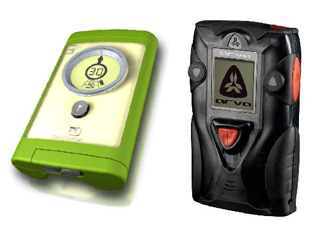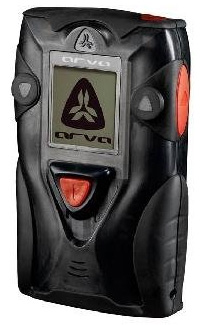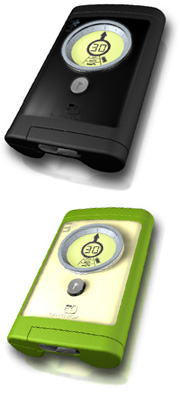Every two or three years manufacturers release improved and more innovative features for their avalanche beacons. Some of these are revolutionary and some are just small enhancements, however, they are constantly moving forward.

Both discussions opened my eyes to some new thinking about avalanche rescue search but also somewhat confirmed my opinion that we might be stuck with some old standards.
Old standards
Technology and standards that are used for current avalanche beacons were established (agreed upon by manufacturers) about two decades ago.
Of course, there were some refinements since then but pretty much it appears that we are stuck with the antennas and the frequency they transmit (457 KHz). Therefore, being stuck also with the way we can search for avalanche victims.
I am no engineer, so during a meeting with ARVA representative from France I asked these questions:
- Isn’t the current technology quite limiting for significant improvements for faster searching?
- If it is then why something new isn’t being invented?
- What about some other technologies (like GPS)?
The answers were both upsetting and encouraging:
On one hand, yes, we are a bit stuck with the very core technology beacons are using now. On the other hand, there are great plans underway to improve what we currently have.
Bad news
The current technology obviously affects the basic functionality of the avalanche beacon and the ways manufacturers can improve its performance.
Also, even with a technology like GPS it would be very tough, at least for now, since users (searcher and victim) would depend on one more piece of device (satellites) than just a transmitting and a receiving beacon. This would make the rescue activity quite vulnerable due to terrain obstacles (steep valley) and satellites available for precisely locating a victim.
Pretty much the bottom line is, according to ARVA representative, that avalanche safety is such a small market to invest big sums of money in to invent, or research, something completely new. Besides, manufacturers don’t have such budgets anyways as they are not selling to huge markets such as electronics consumers.
They could possibly work on this together but then there must be a significant will to share information. In a commercial world we live in, this seems too “utopia like” to consider that. However, there is already a small change on this front which is discussed later in this article.
Good news
The good news is that engineers found some new ways how to improve avalanche beacon search while using the same old standards. To me these are brilliant ideas and I am looking forward to see them work and hopefully to be implemented by more than just few brands.
New ideas: out of the box thinking
Two new avalanche beacons will (should) hit the stores next season – ARVA Link and Ortovox 3+, and they will represent new ideas and developments from inside their companies.
ARVA Link avalanche beacon
ARVA is a French avalanche safety equipment manufacturer that is quite popular in Europe, yet not known at all on the North American market.
 Recently, ARVA purchased or is licensing W-Link broadcast technology from Mammut which uses a second frequency (W-Link frequency: 868 / 915 MHz) for additional data transfer between Mammut Pulse beacons.
Recently, ARVA purchased or is licensing W-Link broadcast technology from Mammut which uses a second frequency (W-Link frequency: 868 / 915 MHz) for additional data transfer between Mammut Pulse beacons.
Mammut uses this frequency to transmit victim’s life data and there is a bit of debate within the industry whether it is good or not to make such information available to those who search.
However, ARVA is not thinking to use this frequency to send such data but rather to use it for communication among all the beacons in a reachable range.
This is how it should work – rescue scenario:
 Party of five gets caught and three persons are buried under the snow, the other two starts searching. As searcher “A” flags (marks) a found victim searcher’s “B” beacon receives this info and flags it too. So now both searchers know there is only two more to be found.
Party of five gets caught and three persons are buried under the snow, the other two starts searching. As searcher “A” flags (marks) a found victim searcher’s “B” beacon receives this info and flags it too. So now both searchers know there is only two more to be found.
Or if the searchers run in different directions and searcher “A” picks up a signal that is too far for “B” to see, it will notify the “B” beacon that it already picked up a signal.
This signal separation would be possible because the other W-link frequency through which the buried beacon is sending its unique ID (maybe a serial number).
Therefore, there is no way a beacon could be flagged but really not located in case of signal overlap by the transmitting beacons which happens sometimes with currently available models.
Taking it a step further:
Lets say another party comes to help and is also equipped with ARVA Link (or other beacon that would support this technology in the future). As they start searching too their beacons will be notified of the already found victims by the searchers “A” and “B” beacons.
You can definitely see how this can be very helpful in multiple burial scenarios. However, as you also noticed, no one started digging yet. 🙂
Ortovox 3+ avalanche beacon
Ortovox is a well known leader in the avalanche safety industry and once again they are readying to release a beacon that will do something no other beacon did before.
 Apart from a very nice design and a use of only one AA battery, which makes the beacon very small and light, Ortovox 3+ will introduce a feature that helps others to search for itself!
Apart from a very nice design and a use of only one AA battery, which makes the beacon very small and light, Ortovox 3+ will introduce a feature that helps others to search for itself!
This avalanche beacon will have the ability to automatically switch between two antennas through which the transmitting signal will be send when buried.
Ortovox 3+ will have three antennas in total but the third will be used only for enhancing it searching capability, not transmitting.
How this works – Ortovox 3+ vs today’s beacons:
When any currently available beacon is buried in a “wrong” way its main antenna will be transmitting mostly in vertical directions – to the sky and to the ground.
If an avalanche manages to bury you the “right” way then you have a better chance of being found as your antenna is transmitting more horizontally (or more leveled to the surface), therefore, providing the searching beacons with a bigger range to pick up your signal.
What Ortovox 3+ will bring to the table is its ability to figure out which one of its two main antennas is positioned more horizontally, then switch transmitting to it.
This means that no matter how this beacon is buried it will always be transmitting on the best plain for the searching beacons to pick up its signal from.
This feature seems quite revolutionary since the buried beacon will actively help the searching beacons to find it. Therefore, improving searching capability of any beacon, even those with a smaller search range.
More details about ARVA Link and Ortovox 3+
Currently, there are not all details available about these two units, thus not everything can be explained right now. However, based on what is known so far the features that will be used in these two beacons are a big step towards future improvements of avalanche beacon search functionality.
Both beacons will be available on the North American market once they are officially released and the purchase prices should be in a range of $350-$420, not too much for such cool features.


Nichrome says
I was thinking and i came across the same idea, more notably with the technology available in smartphones nowadays it should be possible to design an arva app? i’m thinking station specific, they can mount a series of antenna across the domain for triangulation purposes? i don’t know if this would work or if it would be cost efficient but if it were made to work and made available as a trans-platform app ( iPhone, bb, android) then it could save lots of lives. a lot of people don’t consider themselves serious enough skiers to buy an arva still die in avalanches, and i think the tech needs to be made more available and more accurate. with today’s tech we could quite easily pinpoint a victim to within a meter in less than a minute? a distress button would be pressed by all within the party who are safe, thus allowing software to search nearby for stationary signals that aren’t in distress, giving both rescue teams and the party themselves an accurate and speedy location of the victim, which means everything in avalanches. just some ideas for you 🙂
Stano says
I would not necessarily buy a used avalanche beacon unless from a trusted person. The risks are obvious.
There really is not a place for used beacons, eBay would have the best selection. Somewhere else you mind find one or two models but not much more.
Hope this helps.
w3k says
anyone know where to buy used beacons? except ebay?
Stano says
James:
Yes, I found these new ideas/developments encouraging as I was getting little sad with the future outlooks for improvements due to technology standards. But again, I am no engineer, so I don’t know the full potential or limitation of the technology in beacons.
Jeff:
I haven’t had the ARVA Link in my hands, so everything in my write up is strictly based on a conversation. But you for sure could saw that by the tone of the article – just being excited to discuss some new thinking, not necessarily talking about something concrete. Also, I read your articles/comments all the time on other websites and I certainly appreciate your opinion as it seems you have some good knowledge (and passion) to share with everyone.
Marten:
I didn’t look into the GPS Pieps yet. Is this unit’s GPS suppose to work only as emergency personal locator (such as Spot or other PBLs) or will the actual GPS functionality enhance the beacon search?
Marten says
You would also include the new Pieps, netx winters model. It has a GPS.
Jonathan Shefftz says
“Do you know if the searching beacon can also sense its orientation and do similar adjustments in search mode?”
— The firmware that came out in Fall 2008 for the Ortovox S1 sort of does this, in that the beacon will display a graphic essentially telling you to swivel the beacon back & forth to help its searching when it gets stymied.
BTW, the Ortovox 3+ was announced only last month, but already this month I’m supposed to get a demo unit that will be identical to units that will be on sale at retail in just a few months. But the ARVA Link was announced last season, and I haven’t heard anything about when it will really be sale … and has anyone tried a functioning Link yet?
James says
Interesting stuff Stan. Its good to know that the industry is still producing new ideas and at least trying to make strides. I just hope that consumers don’t get wrapped up in the bells and whistles and feel that they need to replace their beacon as often as they replace their cell phones. Do your research, settle on a beacon that suits your needs, and get to know it like the back of your hand. A Canadian study last year found that naive users (never used a beacon) actually did best is test scenarios with the more simple digital 2 antennae models with not a lot of extra features. They found that they were pretty much useless with pure analog and not that great with really advanced digital, three antennae machines. I really think the antenna orientation feature you talk about above is neat. Do you know if the searching beacon can also sense its orientation and do similar adjustments in search mode. We all know you should keep your beacon oriented properly when searching but if these beacons can actually help with searcher clumsiness, that would be cool.